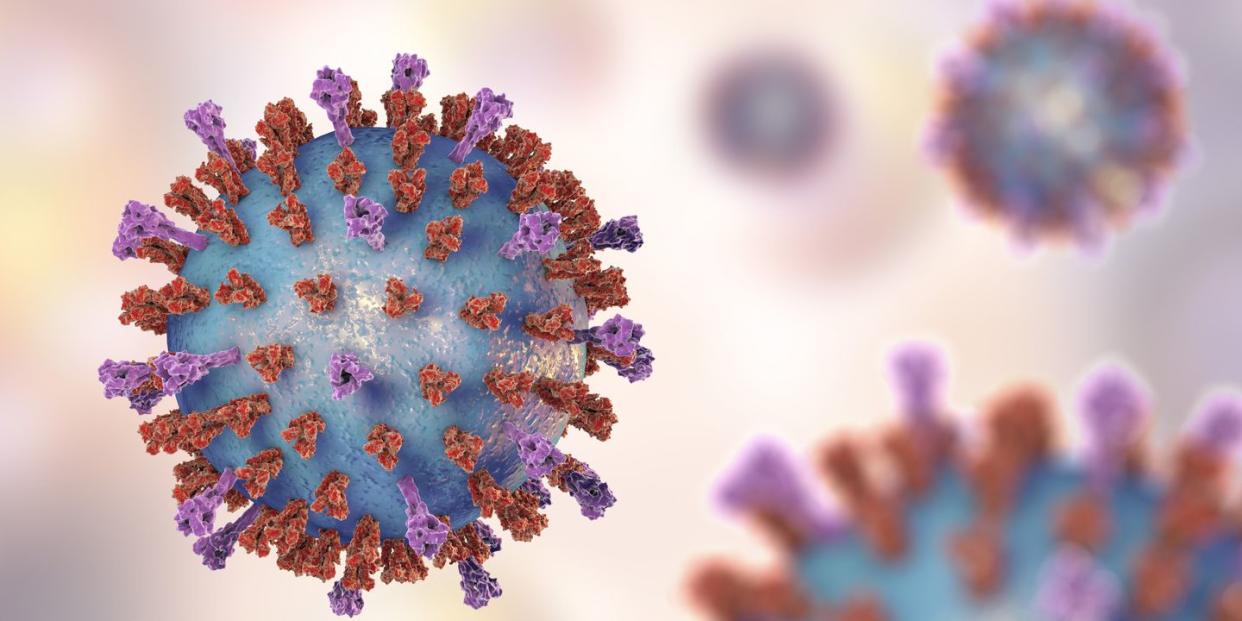The Telling RSV Symptoms and Signs to Watch for in Fall and Winter 2022

Cases of respiratory syncytial virus (RSV) are skyrocketing in the U.S. right now. The virus has caused an influx of children at pediatric hospitals, where some say they’re so packed that they have kids waiting in the hallways at emergency rooms to be seen.
“Our system is being absolutely overwhelmed with kids that have RSV,” says John C. Brancato, M.D., division head of emergency medicine at Connecticut Children’s. RSV cases started to increase at the end of August, according to data from the Centers for Disease Control and Prevention (CDC) and have recently soared. The latest data show a whopping 15% of tests done for RSV in the U.S. are positive right now.
“Because of the great hygiene we had during the pandemic, many people have not had RSV in the last few years,” says Daniel Ganjian, M.D., a pediatrician at Providence Saint John’s Health Center in Santa Monica, Calif. “Everybody’s immunity to RSV has gone down, allowing for more people to get it at this point.”
But what is RSV, exactly, and what symptoms should you be on the lookout for? Here’s what you need to know.
What is RSV virus?
RSV is a common respiratory virus that typically causes cold-like symptoms, per the CDC. Most people recover from RSV in a week or two, but it can be serious—especially in infants and older adults. RSV is the most common cause of bronchiolitis (inflammation of the small airways in the lung) and pneumonia (infection of the lungs) in children under the age of one in the U.S., the CDC says.
RSV spreads a few different ways, per the CDC. Those include when an infected person coughs or sneezes; when you get virus droplets from a cough or sneeze into your eyes, nose or mouth; when you touch a surface that has the virus on it and then touch your eyes, nose, or mouth before washing your hands; and when you have direct contact with the virus, like kissing someone with RSV.
RSV symptoms in kids and adults
People usually develop RSV symptoms within four to six days after they’ve been infected, the CDC says. Those symptoms can include:
Runny nose
Decrease in appetite
Coughing
Sneezing
Fever
Wheezing
Worth noting, per the CDC: The symptoms usually appear in stages. “Things are usually the worst around day three or four and then get better,” Dr. Ganjian says. In young infants with RSV, the only symptoms might be irritability, decreased activity, and breathing difficulties, the CDC says.
What does RSV look like in adults?
It depends. “In healthy adults, RSV tends to be more like a common cold,” says Thomas Russo, M.D., professor and chief of infectious disease at the University at Buffalo in New York. “You usually wouldn’t be able to differentiate it from other respiratory viruses.”
But, in older adults who are more frail, RSV can cause a lower respiratory tract infection, Dr. Russo says. “That would cause shortness of breath and possibly wheezing,” he says.
RSV treatments
Unfortunately, there’s no specific treatment for RSV. “Treatment is mostly symptomatic,” Dr. Russo says.
According to the CDC, that includes:
Managing fever and pain with OTC medication like acetaminophen or ibuprofen.
Drinking plenty of fluids to keep you from getting dehydrated.
If you’re feeling stuffy with RSV, Dr. Russo suggests taking a decongestant like DayQuil or NyQuil. (Note: Young children can't take either medication.) And, if you have an underlying lung condition like asthma, he suggests checking your blood oxygen levels with a pulse oximeter. “It can help you keep track of how you’re doing if you’re feeling out of sorts,” he says.
If RSV become serious—and it can—you may need to receive albuterol (an inhaled medication that relaxes the smooth airways in the lungs), oxygen, or both, Dr. Ganjian says. He recommends taking small children to be seen by a medical professional if they seem to have trouble breathing, are breathing faster than usual, or their nose is flaring when they breathe—a sign of trouble breathing.
In adults, trouble breathing, wheezing, or a consistent pulse oximeter reading of 94 or below—especially if it seems to be decreasing—should prompt you to seek medical attention, Dr. Russo says.
You Might Also Like


